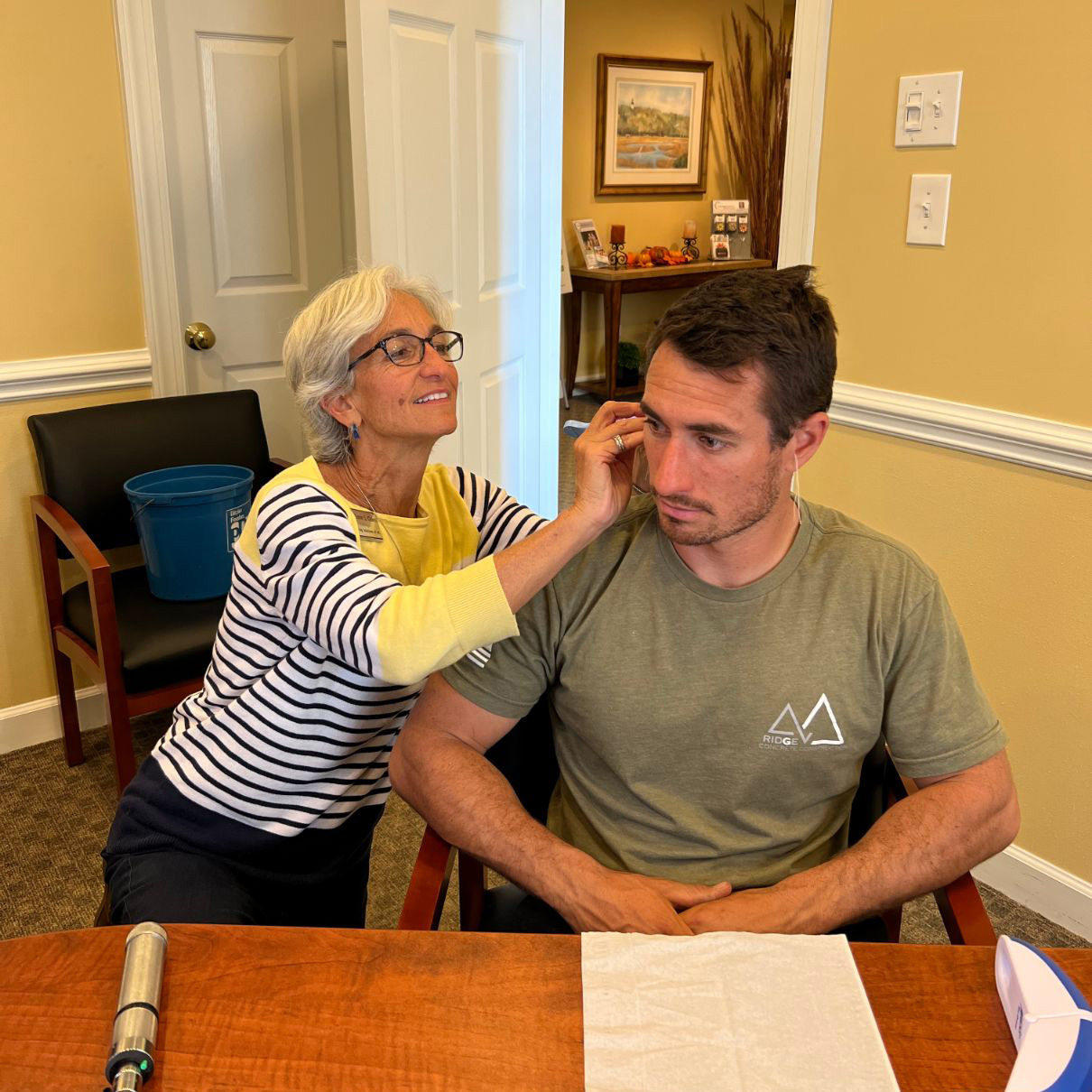Earmolds for Hearing Aids
An earmold is a necessary component of any hearing aid
Quite simply, the earmold is the part that goes into your ear canal. It might be made of plastic, acrylic, or silicone. While some hearing aids use standardized ear pieces (domes) of a few different types and sizes, others require a custom earmold that fits your ear perfectly.
We will choose the right type of ear piece for you based on the shape of your ear canal, the amount your ear canals move with jaw movement, and the severity of your hearing loss.
Whatever the case may be, you can rest assured that Hearing Solutions of North Carolina will help you find the most appropriate earmolds for hearing aids.

Earmolds for Hearing Aids: Standard Earmolds/Domes

Many BTE- and RIC-style hearing aids use standardized silicone ear pieces or domes. These are usually best for mild-to-moderately-severe hearing losses. If you still hear well in low frequencies, a vented/open dome may be suggested, which will allow sound to pass right through the dome from the outside. This can help provide a more natural sound, but isn't sufficient for everyone.
RIC (Receiver-in-Canal) hearing aids place the speaker in the ear canal, which helps reduce feedback, or “whistling,” by increasing the distance between the microphone and the speaker. We work with domes that are either open, closed or power so we have many options for your particular hearing needs.
Domes need to be replaced periodically. We will replace those for you during your maintenance checks or routine open clinic appointments. If your domes have worn out, or if you acquired your hearing aids elsewhere, we can get you properly fitted as long as your hearing aids are appropriate for your hearing needs.
Custom Earmolds for Hearing Aids
Custom earmolds for hearing aids require us to take an impression of your ear canal and outer ear. We will insert a protective cotton dam into your ear canal before injecting a two-part silicone material into your ear and ask you to open and close your mouth while it dries out. This ensures that your impression won’t be uncomfortable when you move your jaw while wearing your hearing aids. The process is completely painless and only takes about five minutes.
We send the impressions to a special lab where they use them to create a replica of your ear canals and outer ear structures. This replica then becomes the mold for your custom earmolds.

There are more than 10 general styles of custom earmolds for hearing aids, each for different needs or hearing aid types.
We'll discuss with you what types of hearing aids might best suit your needs and lifestyle after we examine your ears.
Some of the most common types of earmolds for hearing aids include:
Hearing Aid Molds VS Domes
Hearing aid molds and domes are two different types of accessories used to connect the hearing aid to the ear canal.
Hearing aid molds are typically made of silicone or acrylic material. They are designed to provide a tight seal that can help reduce feedback and improve sound quality. Hearing aid earmolds are custom-made to fit the unique shape of the ear canal.
Earmolds can be suitable for individuals who have significant hearing loss and need a more secure fit or for those who experience discomfort with standard dome tips.
Hearing aid domes are typically made of soft rubber or silicone and come in a variety of sizes and shapes. They fit into the ear canal and provide a comfortable seal while allowing some natural sound to enter the ear.
Domes can be a good choice for individuals with mild to moderate hearing loss, as they are less obtrusive than molds and can be easily replaced.
The decision to use a hearing aid mold or dome depends on several factors, including the shape of the ear canal, degree of hearing loss, comfort, and individual preferences.
An audiologist or hearing healthcare provider can help you choose the best option for your specific needs.
How much do earmolds cost for hearing aids?
The cost of earmolds for hearing aids can vary depending on several factors, such as the material used for the earmold, the type of hearing aid, and the complexity of the molding process.
Custom earmolds tend to be more expensive than standard molds.
Some hearing aid manufacturers may offer discounted or complimentary earmolds as part of their hearing aid packages.
It's best to consult with your hearing care provider or audiologist to get an accurate estimate of the cost.
Earmolds for Hearing Aids | Salisbury, NC
Ultimately, we will need to determine which type of earmolds for hearing aids will work best for you.
At Hearing Solutions of North Carolina, we take the time to listen to you and make sure we understand your concerns as we develop your hearing rehabilitation treatment plan and make appropriate recommendations.
We offer fitting and customization of earmolds for hearing aids, including hearing aid earmold replacement and other related services.
Contact us today to schedule an appointment!
